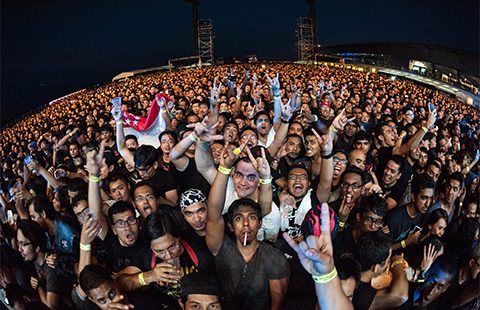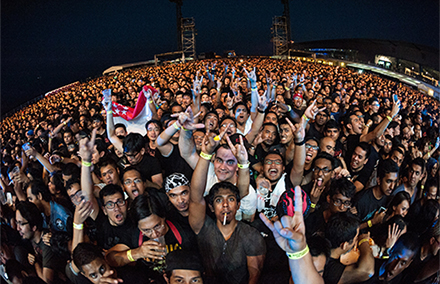
Even metal heads from mosh pits will have an impact on Singapore’s 2015 elections. Photo by Jeremy Foo/ Poached Images.
Bridget Welsh takes a look at voting behaviour in Singapore, charting how an evolving electoral system, shifting political engagement and ordinary citizens will shape this Friday’s ballot.
Some 2.46 million Singaporeans – all citizens above 21 – will have the chance to vote this Friday.
This is not only the most competitive elections in terms of all seats contested in decades, it is also a fierce competitive contest. Every vote will count – even the spoilt ones.
The study of Singaporean voting behavior is a relatively underdeveloped field. Unlike in other countries where polling and analysis of voting practices is common, these methods of understanding elections in Singapore have only started to emerge.
The reasons for the late development of voting behavior studies vary. They range from the constraints placed in academia surrounding politics and limits to publish polling data during elections in Singapore, to the dominance of the process by a few resource-rich, government-linked think-tanks.
Singapore’s small size and the perceptions that electoral outcomes are predetermined have also discouraged research.
As polling day approaches, a reflection on what we know and recent trends in voting behavior is valuable. Singapore is a complex society that should be understood with greater nuance and respect, despite the obstacles involved in doing this.
Different constituencies and communities will be decisive in shaping the outcome on 11 September. This article explores how the electoral system and political engagement is evolving and will shape the results.
All in, everyone votes
Voting is compulsory in Singapore, similar to Australia, Argentina, Peru and Uruguay.
Only 10 countries in the world enforce this system, with Singaporeans subject to a fine for failing to show up at the polls – even if the voting location is part of a new constituency newly configured in the months before the election and quite far away from where they have voted in the past.
Compulsory voting is seen to bring about greater political legitimacy – as it is the entire voting population shaping the political mandate – and enforces a strong sense of civic responsibility. In Singapore – with so many walkovers and in fact so few people coming to the polls in the past – this traditionally has not had the same effect.
This Friday, with all seats in play, this will change.
The outcome will have greater weight, as all Singaporeans – no matter where they live (except some overseas) or what constituency they will live in – have a chance to determine the results. Attention will centre on the popular vote as a measure of the legitimacy of the long-ruling People’s Action Party (PAP). For Prime Minister Lee Hsien Loong, this number will be especially important as it is his leadership that is being assessed.
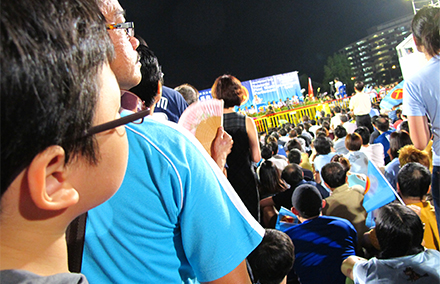
A rally for Singapore’s main opposition, the Worker’s Party. Photo by Steel Wool on flickr https://www.flickr.com/photos/wynnie/
Compulsory voting systems have other effects as well.
They bring many voters who are politically disengaged, even sometimes uninformed, into the electoral process. This can contribute to higher spoilt votes, but more importantly the system forces voters who would normally opt out of participating to make a choice.
This makes the campaign especially impactful in shaping voting outcomes, when attention is concentrated on the elections publicly or accentuates the power of particular events or meaningful experiences in the last year.
Thus, compulsory voting is often associated with a large share of voters that can be easily swayed, shaped by the sources of information they receive, and their personal networks. In Singapore there is a large share of voters that can be influenced in this manner, with considerable ‘undecided’ or ‘disengaged’ voters who are being wooed.
This means that the final tally remains relatively open, with the popular vote potentially swinging to a greater degree than is common elsewhere.
Serious political content
While other countries worry about voter turnout and convincing people to vote, in Singapore the focus of political engagement is on the messaging and messenger.
Singaporeans best differentiate themselves in electoral campaigns in Southeast Asia with a greater attention to policy. This has deepened in the 2015 campaign.
Online and even in rallies, considerable discussion centres on solutions to problems rather than the problems themselves, revealing a sophistication in the electorate as a whole, a strengthening of the opposition who has upped its contributions to the national discourse, and the reality that the PAP is on the back foot over some of its policy governance.
While the greatest attention has focused on the white paper on population policy, important questions are also being asked about the management of public funds.
One important example is the Central Provident Fund – the government’s social security savings plan. How much are the losses involved? Will there be accountability and transparency over these funds? How do perceived losses impact citizens and their retirement savings?
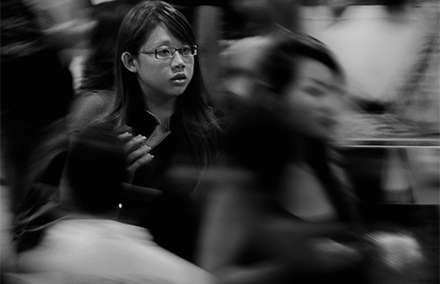
Singapore’s population size has been a key issue this election. Photo b digitalpimp. on flickr https://www.flickr.com/photos/nathanhayag/
Other questions centre on health care, an area addressed by significant interventions by the PAP. Citizens are asking how health care spending in Singapore compares to other public spending and revenues. Policy options and their management are an integral part of the 2015 election.
Elections in Asia are often described as performances by scholars, a form of political theatre. This dimension is there – even with some good jokes and a few jokers.
On both sides of the divide, the political rallies are festivals of like-minded citizens, celebrating their civic engagement. Given the serious content being discussed, however, Singapore’s campaign has become a valuable political outlet for public debate, one arguably more robust than that in Singapore’s parliament itself.
Communication silos
With Singapore’s increasing complexity, there have been changes in how voters are accessing their information and being politically socialised. We see two conflicting trends.
First, there has been a leveling of the playing field, with the opposition getting more access to engage in political communication and voters on the whole getting more information. Mainstream media outlets are streaming opposition rallies and while the photographs of opposition figures are still not exactly flattering in many of the newspapers, their messages are being included.
What makes the 2015 campaign different from 2011 is that more of the candidates’ voices are being heard directly. In the competitive spirit of Singapore, the media outlets do not want to be left behind in marketing information.
On the other hand there is a growing silo dimension in the political communication landscape.
As Singapore has become more politically polarised, this has led to more echo chambers, where voters access the news on the sites they are most comfortable with, even those in the middle ground. There is even distortion of opponent positions in these mediums. More and more Singaporeans are communicating with the converted, a dynamic that is being reinforced with sharing of information among trusted friends on Facebook and other social media mediums.

Mainstream media is covering opposition parties in this year’s elections. Photo: Andreas Kretschmer on flickr https://www.flickr.com/photos/poweropfer/
While the layer of political difference is dividing the electorate, Singapore’s media outlets are already quite fragmented due to different languages.
The government effectively dominates non-English media, such as Channel 8, although the discourse in Chinese has become more diversified this time round online (with some of the funniest videos and spoofs).
Malay and Tamil mediums also favour the incumbent, although given Singaporeans multi-lingual backgrounds these differences are present but not as sharp as implied. Outreach across communities requires resources, placing those lacking comparative funding at a disadvantage.
Given that all Singaporeans are required to vote, the biases in the media translate into entrenched methods of political socialisation.
Cross-cutting social cleavages
Looking within Singaporean society, we have five major socio-economic cleavages that have been used to analyse difference in voting.
The most cited of these is generational differences, accentuated by the PAP’s post-2011 focus on older citizens labeled the ‘Pioneer Generation.’ These older voters are being heavily wooed with modest increases in state funds.
Studies elsewhere show that voting patterns are more rigid among older voters and it is only when their security is perceived to be threatened (as happened in 2011), they deviate from voting norms. 2015 will test whether the PAP has met security concerns of heath care and economic livelihoods amidst rising costs.
On the other side of the generational divide are younger voters – seen to be accessing information through social media (thus less socialised in PAP-linked mediums) and more open to checks and balances in political power.
There are factors influencing younger voters beyond outlook, including the nationalist events of the past year, concerns about long-term security and the economy as well as connectivity to younger candidates.
Of all the groups, younger Singaporeans are concerned with the future, as it is their dreams that are at stake. It is not a coincidence that this campaign has seen the youngest candidates in recent history (the 1960s was similar), with this swing group critical in youthful constituencies such as East Coast Group Representation Constituency.
If there is another group that has been the focus of PAP outreach post-2011 it has been women, especially married women with children.
The PAP has increased childcare facilities and continued to include women in its lineup (although not to the extent as other developed countries). Attention to health care, education and family welfare have been particularly geared to appeal to women, who make up the largest number of voters in Singapore.
This is being counteracted by concerns over cost of living and economic security. Gender issues over motherhood as well as debate about the role that wives should play in government have permeated campaign discussions.
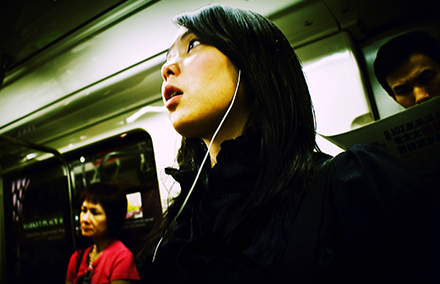
Women will have an impact on this Friday’s vote. Photo by digitial pimp. on flickr https://www.flickr.com/photos/nathanhayag/
While women are the majority group, minorities will be important, especially in tight races and where they are heavily concentrated outside of public housing HDB flats. The sensitivities over ethnic inclusion have already been raised in campaigns, be it in celebrating traditions and faiths, wearing clothing, and even participation in government sectors.
The narrative over inclusion has coexisted with one of exclusion, a sense of dislocation and distress coming from rising population numbers and perceived unfair favourable treatment for those not in the ‘Singaporean core’. Malays, Tamils, and new citizens will affect potentially close contests, such as Mountbatten.
Across the region, class dynamics have been seen to decisive in electoral outcomes, and this is also the case in Singapore.
In Indonesia lower class voters put president Joko ‘Jokowi’ Widodo in office, as they did for PM Najib Razak in Malaysia. In recent elections there has been a similar pattern in class voting emerging between Malaysia and Singapore (countries that on many levels are very different despite their shared history).
For example, those with more independence from government – eg outside of government/government-linked employment/coming from private business or professions, with private property and with higher levels of education/global exposure – are more likely to vote for the opposition. The super-rich enjoying one of the world’s most attractive locations for their wealth and those who have aggrandised their incomes through crony connections are exceptions, of course.
The importance of class background and how it relates to the government made the campaigns in parts of the East Coast heated in 2011. While many of these constituencies have been redrawn, such as Marine Parade, this election will be affected by this as well. The reality is that the relationship between the government and more independent voters is different than those with greater ties and dependency to the incumbent party.
When Singaporeans go to the polls on Friday, whatever has shaped their choices – be it socialisation, policy debate, information, messaging or identities – their votes will count perhaps more than they ever have in Singapore’s history.
Indeed, in this fiercely fought race, ordinary citizens will and can make a difference.
Bridget Welsh is a Senior Research Associate of the Center for East Asia Democratic Studies of the National Taiwan University where she conducts research on democracy and politics in Southeast Asia. She is also an Associate Fellow at The Habibie Center and University Fellow at Charles Darwin University.
 Facebook
Facebook  Twitter
Twitter  Soundcloud
Soundcloud  Youtube
Youtube  Rss
Rss 